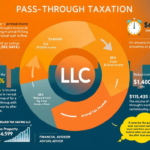Landlords have many responsibilities to handle in general, but moving a new renter into their property is a particularly busy time. Among the many duties associated with this process — and perhaps the most important — is collecting a security deposit from the tenant.
The security deposit is a fee that the renter is required to pay alongside their first month’s rent that protects the landlord from financial damages in the event of a broken contract or significant damage to the property found after move-out.
If no damages are found and the lease contract is not broken, the landlord will return the security deposit in full to the tenant upon move-out. The security deposit total is decided by the landlord based on local averages as well as the overall property value.
What If I Can’t Return the Security Deposit in Full?
In an ideal world, you’d always be refunding security deposits to your tenants in full after they move out because they left your property in pristine condition. However, this isn’t always the case.
There may be some situations in which you feel that you have to withhold some or even all of the security deposit in order to fix damages that your tenant caused before you can find another renter.
Security deposits don’t have to be returned either in full or not at all; as a landlord, it’s within your discretion to return part of your tenant’s security deposit based on the particular damages caused or the breaches of the lease contract.
Let’s take a look at some specific steps you should take to be as accurate and fair as possible when refunding security deposits.
Thoroughly Inspect the Property After Move-Out
If you return your tenant’s security deposit in full before performing a thorough inspection of your property after move-out, you may end up missing significant damage or even evidence of theft that would be grounds for a security deposit deduction.
In order to be fair to your own needs as a property owner as well as to the rights of your tenant, make sure to complete your property inspection before refunding security deposits.
Is It Damage or Simply Wear and Tear?
While some types of property deterioration are severe enough that the tenant needs to be held liable through a security deposit deduction, other types are considered to be within the realm of expected wear and tear.
The best way to determine the difference between damage and wear and tear is to consider whether the deterioration was likely caused by neglect or misuse.
For example, fading paint is an example of wear and tear that shouldn’t affect your process when refunding security deposits. However, chipped paint from furniture scrapes and unauthorized additional paint can be categorized as damage that reduces a tenant’s security deposit return.
Read Up on Local Law
Local and state laws that deal with refunding security deposits will let you know exactly how you need to go about returning your tenant’s security deposit and under what circumstances you can reduce the amount you return.
Make sure you know exactly how many days you have after your tenant surrenders the property to create an itemized deduction statement and return the appropriate security deposit amount. When returning security deposits in full, you should still include documentation that notes when you returned the amount to your tenant.
Fill Out a Security Deposit Disposition Form
If you find it necessary to reduce the amount when returning security deposits to tenants, it’s important to create a detailed record of what you’re deducting from the total and why. You can create your own security deposit disposition form or find a template online.
When filling out a security deposit disposition form, make sure to include crucial details, such as:
- The tenant’s name, current address, and move-out date
- The date you’re filling out the form
- A detailed list of damages and concurrent deductions
- The security deposit total
- The security deposit return after deductions
Keeping thorough documentation both for yourself and for your tenant will help to keep the line of communication open and protect you from legal trouble should you have any issues with your former tenants.










